By Gonzalo Ríos-Vizcarra
Member of UIA Community Architecture & Human Rights Work Programme
Abstract
In the current context of rising migratory mobility, territories with a heavy historical burden face complex dilemmas related to what should be considered spatial justice. This article reflects on the tensions that arise when the morphology of Andean villages, historically and symbolically charged , is transformed by foreign communities seeking to establish alternative forms of spiritual life. Through the case of Pisac in the Sacred Valley of the Incas in Cusco, Peru, the conflict is analysed in terms of the Indigenous peoples’ right to preserve their ways of life and the newcomers’ right to occupy the territory according to their own aspirations and symbolism. Architecture is proposed as a mediator between diverse memories, practices, and aspirations that must act ethically in the face of symbolic disputes that emerge between permanence and the forces of displacement.
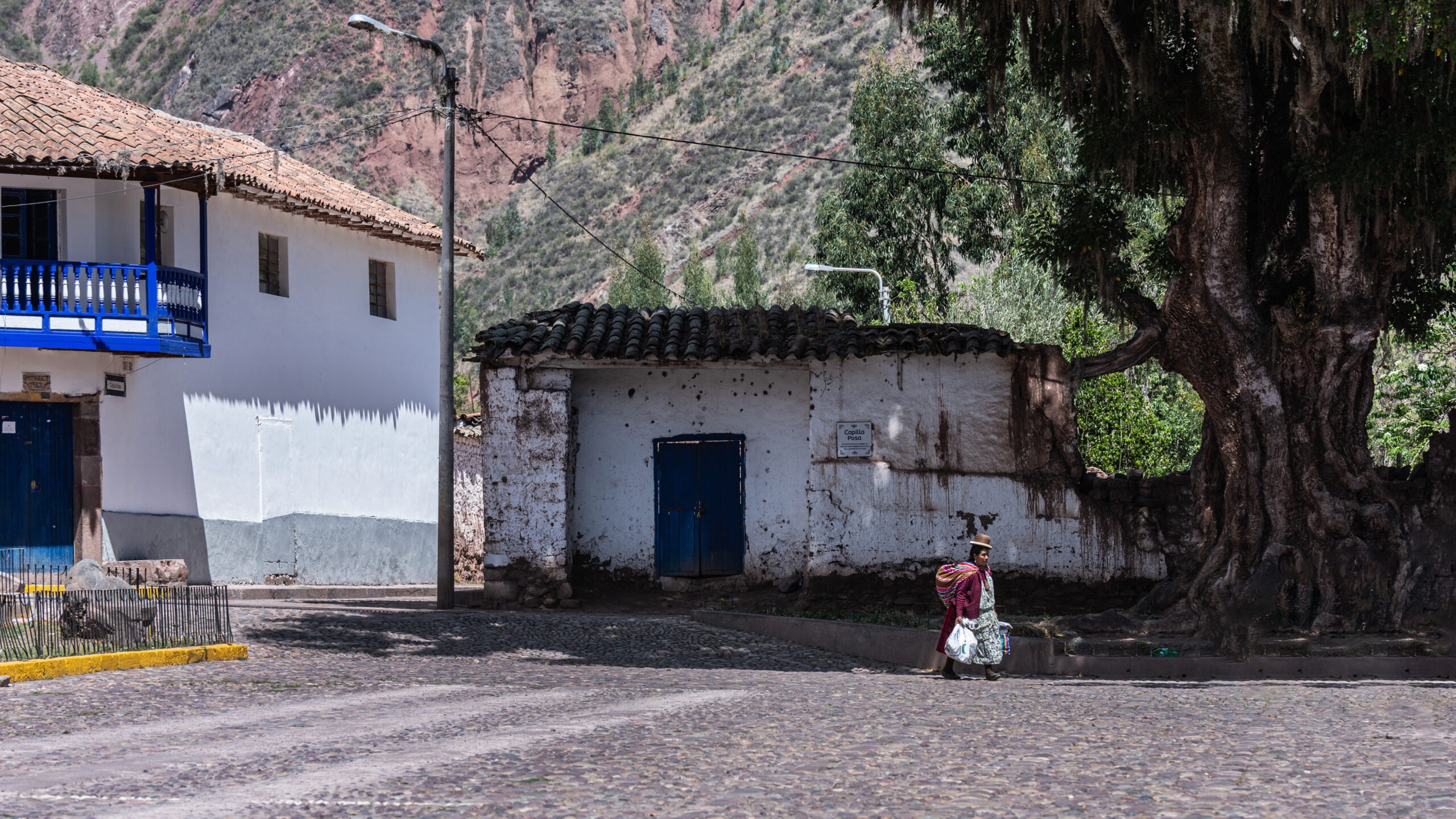
Photograph 1: View of the town square in Andahuaylillas in the department of Cusco, Peru. Many of the South American villages located in the inter-Andean valleys preserve not only settlement patterns from the colonial era but also ways of life rooted in ancient worldviews. Source: Omar Urday
Introduction
Contemporary human displacement dynamics no longer respond exclusively to humanitarian, economic, or political causes. Today, we are witnessing new forms of migration motivated, for example, by spiritual quests, therapeutic needs, and alternative lifestyles that are taking root in territories with a long history (Gómez-Barris, 2012; Jordan, 2022). The southern Peruvian Andes, particularly the Sacred Valley of the Incas, have become one of the epicenters of this phenomenon, attracting transnational communities seeking to anchor themselves in places they recognise as energetically powerful or symbolically fertile. This foreign presence redefines
architecture, transforms landscapes, and reconfigures ways of living that local populations have passed down for generations (Ríos-Vizcarra et al., 2023, 2025).
From a spatial justice perspective, this phenomenon poses an ethical dilemma: how to harmonise the global right to freedom of mobility with the local right to preserve one’s own ways of inhabiting and signifying space? Architecture, historically committed to shaping the environment, is at the very heart of this dispute, facing the challenge of building without disregarding the principles that have shaped the land.
Andean peoples and spiritual displacements
Indigenous Andean peoples, especially those who emerged from the colonial reductions of the 16th century, were shaped according to spatial devices that imposed a new urban logic—central squares, dominant churches, orthogonal layouts—on a territorial fabric that previously responded to agricultural cycles, relationships with the landscape, and ancestral ritual practices (Murra, 2002). Nevertheless, Indigenous communities maintained a symbolic and emotional way of relating to space, where hills, rivers, and farmlands were part of a living cosmology.
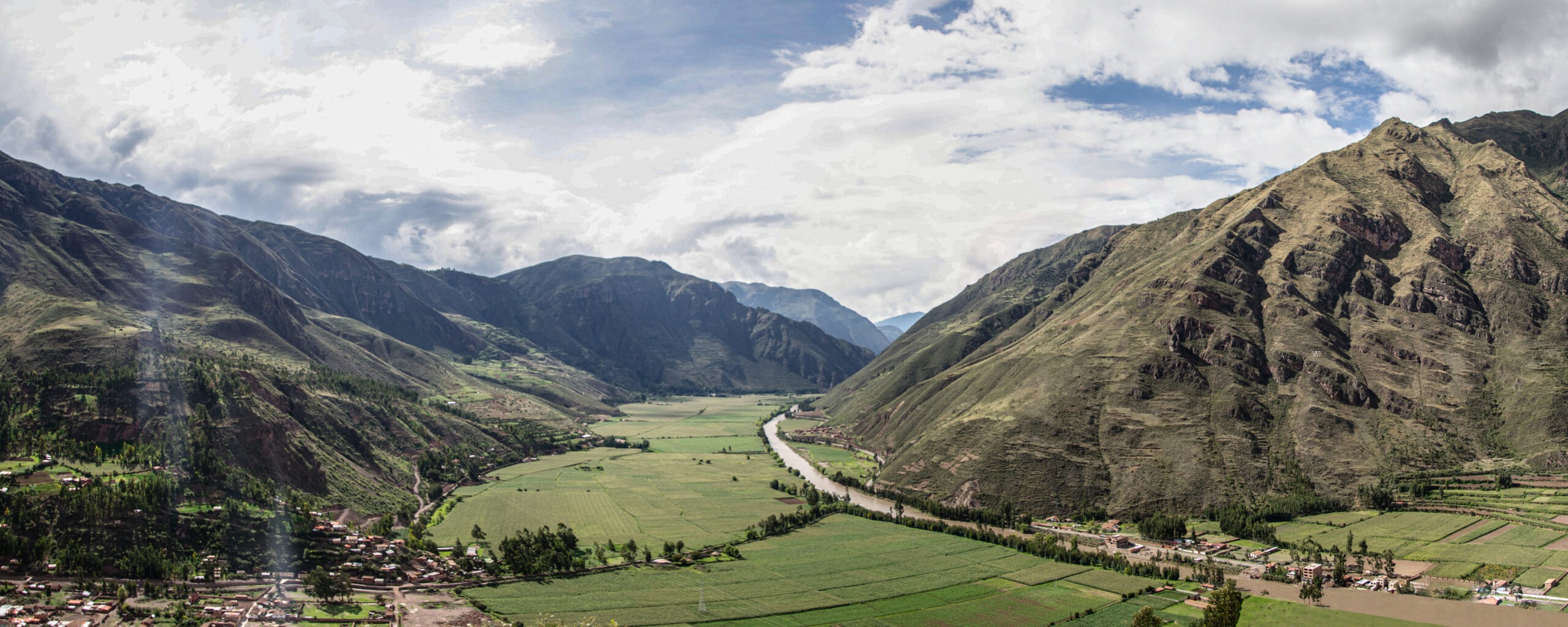
Photograph 2: The Sacred Valley of the Incas connects a series of villages along the Vilcanota River. The farmlands, mountains, river, and archaeological sites form a unique ensemble that is said to have mystical connotations. Source: Omar Urday
In recent decades, these villages have begun to receive new forms of occupation driven by groups of people from various parts of the world seeking suitable places for non-institutionalised spiritual practices. These new settlers bring with them not only ritual dynamics that unfold in the Andes but also a new aesthetic that leaves its mark on a sensitive territory.
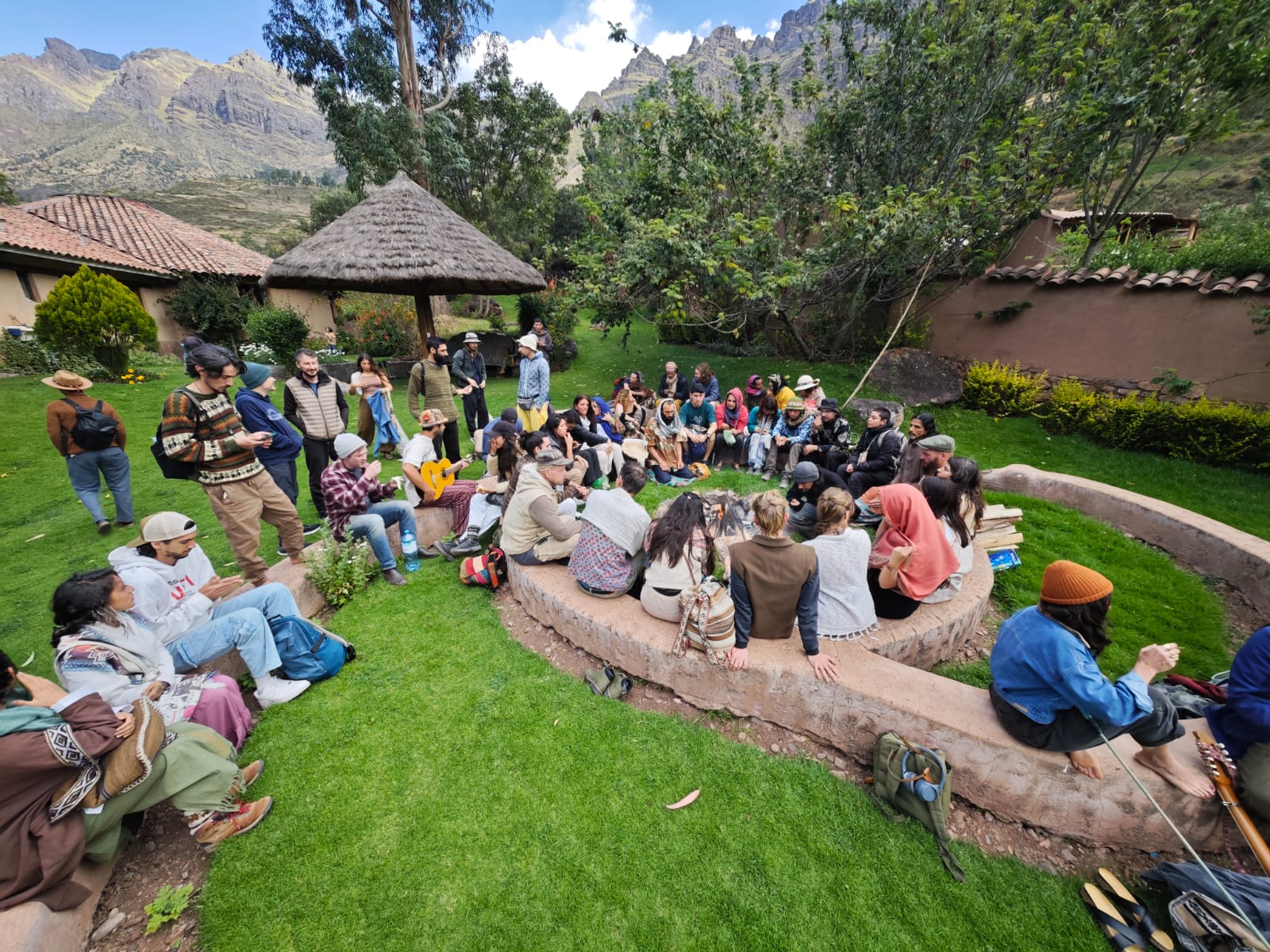
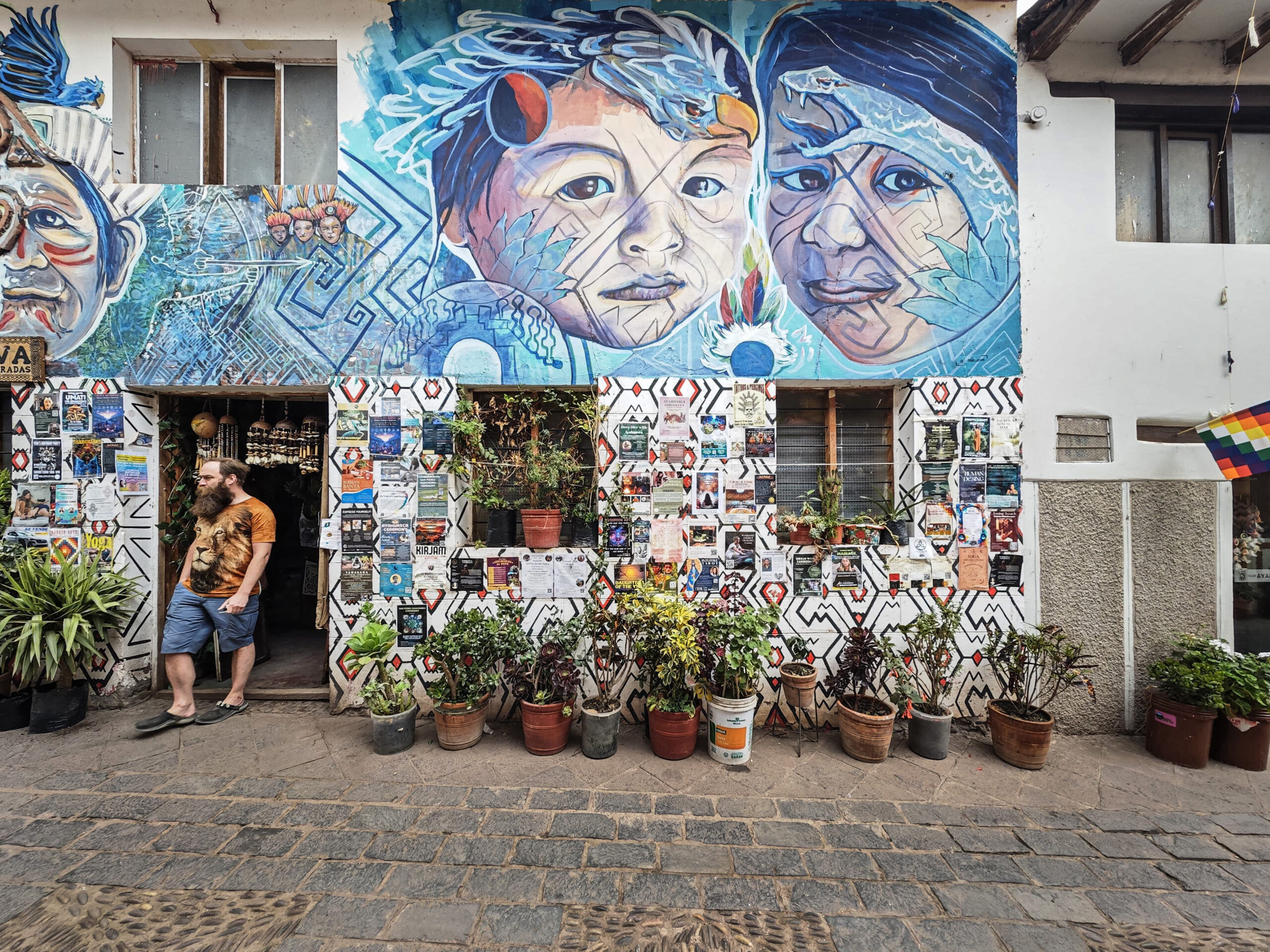
Photograph 3: Groups of people from different parts of the world arrive in Cusco in search of spiritual experiences, developing new forms of occupation and symbolism in the Andean landscape. Source: Gonzalo Ríos-Vizcarra
Although these spiritual journeys are not motivated by extractivism, they do transform the territory. They establish a new way of living that is somewhat disconnected from the local collective memory and rapidly modifies a landscape constructed in line with ancestral logic.
Pisac and the reconfiguration of its symbolic image
Pisac, one of the towns located in the Sacred Valley of the Incas, has undergone a profound transformation in recent decades. Traditionally linked to agricultural practices, communal festivities, and a close relationship with an impressive Inca archaeological site, it is now being transformed by transnational communities seeking a place for healing, spiritual reconnection, or experimentation with ritual hallucinogens.
 Photograph 4: Among the towns that make up the Sacred Valley of the Incas, Pisac attracts the highest number of foreign groups searching for mystical experiences. However, the local population continues to make use of its public spaces, such as its main square. Source: Omar Urday
Photograph 4: Among the towns that make up the Sacred Valley of the Incas, Pisac attracts the highest number of foreign groups searching for mystical experiences. However, the local population continues to make use of its public spaces, such as its main square. Source: Omar Urday
Architecture is one of the most visible indicators of this change. In areas on the outskirts of the traditional town, various buildings have been erected for ritual practices, adopting foreign styles such as domes, yurts, teepees, and semicircular structures that serve as multipurpose spaces for different types of hybrid ritual practices. In the town centre, many old houses have been renovated to house yoga rooms, alternative medicine shops, or ceremony halls. While some projects respect local materials and techniques, in many cases there is evidence of a superficial aestheticisation of Andean culture that responds more to spiritual consumption than to an understanding of the land as an ancestral space. 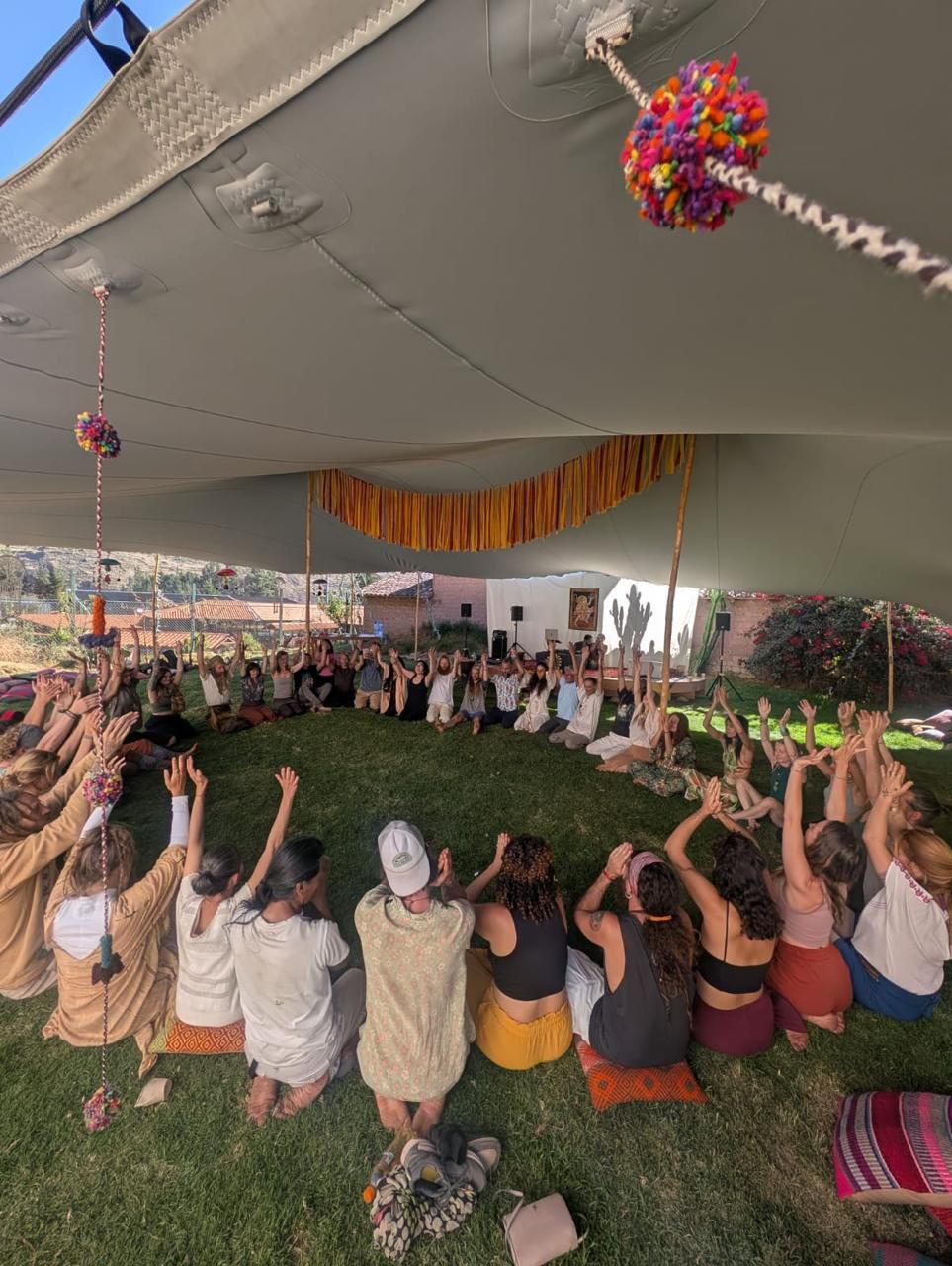
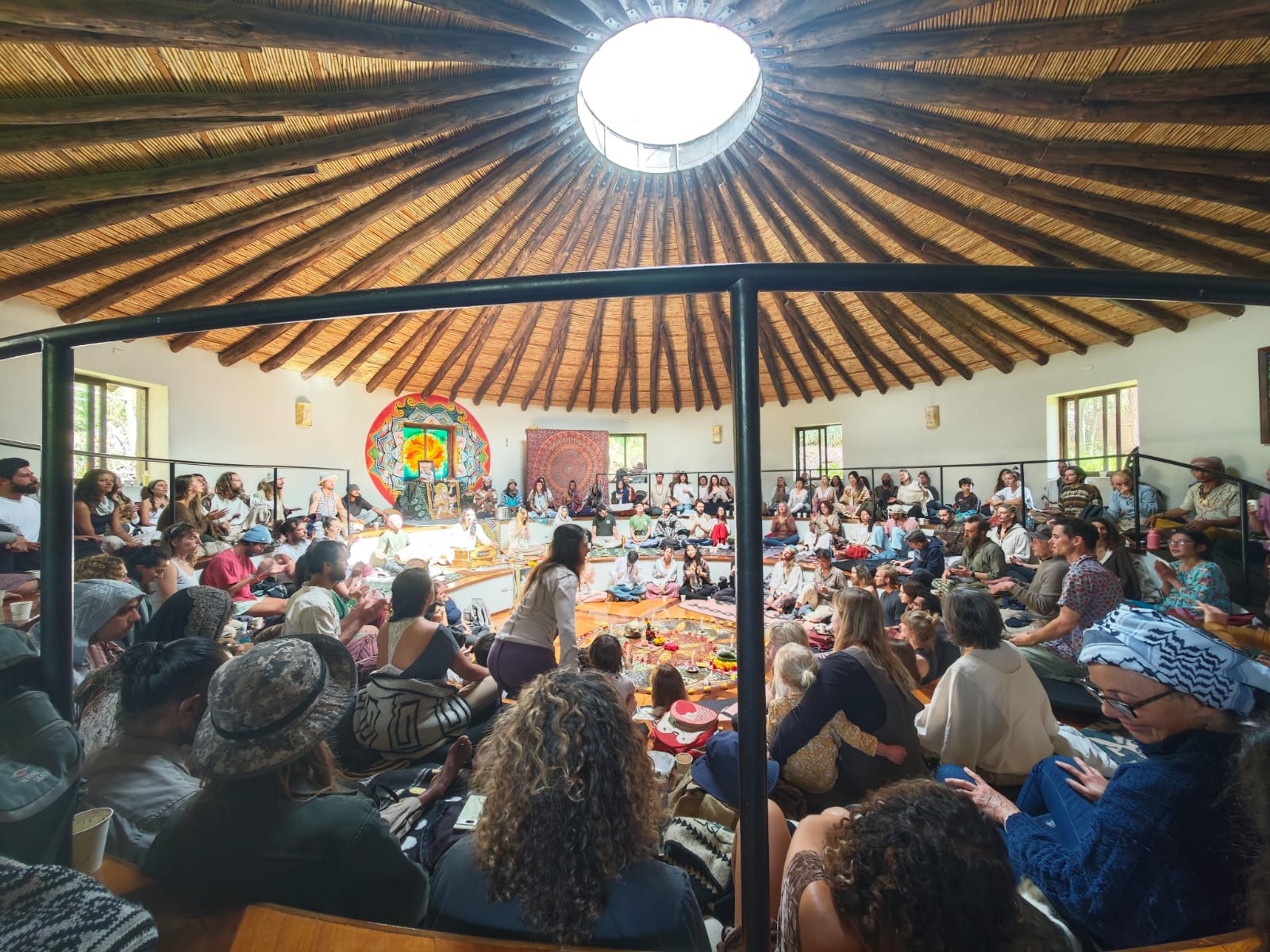
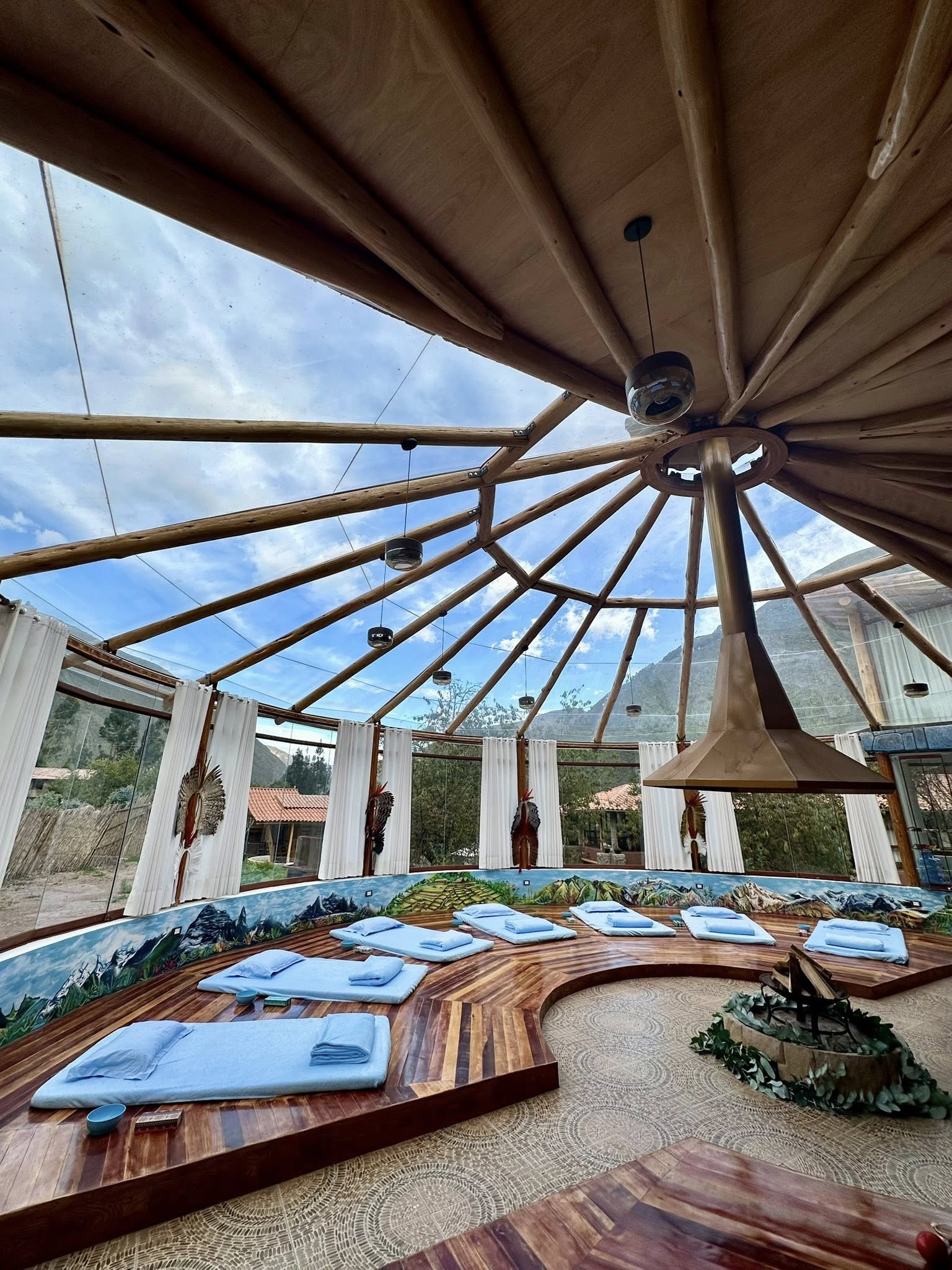
Photograph 5: New architectural styles are emerging in the Andean region, whose main characteristic is their flexibility to accommodate new forms of hybrid rituality.
This phenomenon is not merely aesthetic. Many local families have found new ways to improve their dwindling incomes by renting or selling their properties, taking advantage of rising real estate values. Some agricultural land has been converted into therapeutic lodges with foreign landscaping, altering the productive and social rhythms of the place.
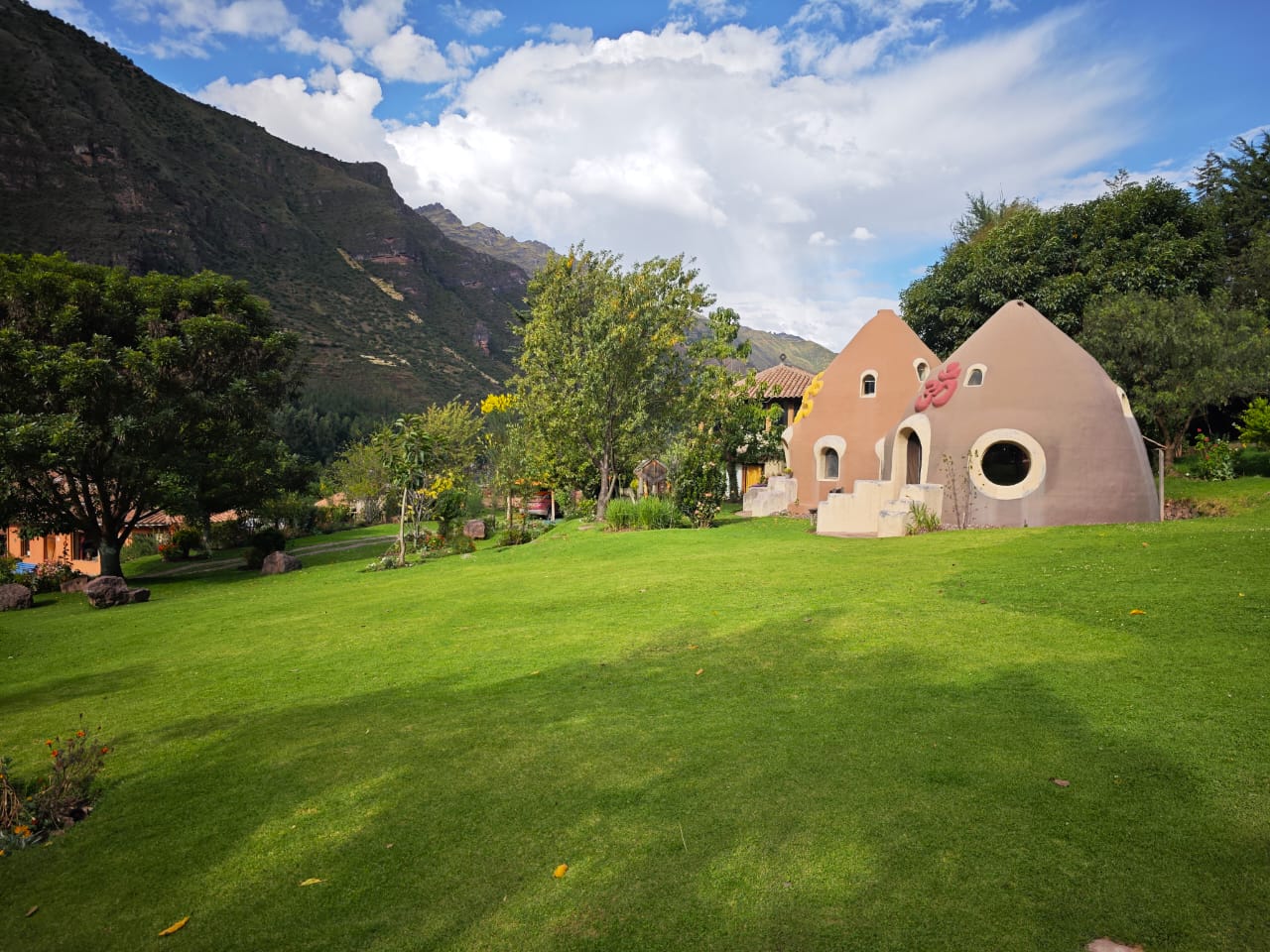
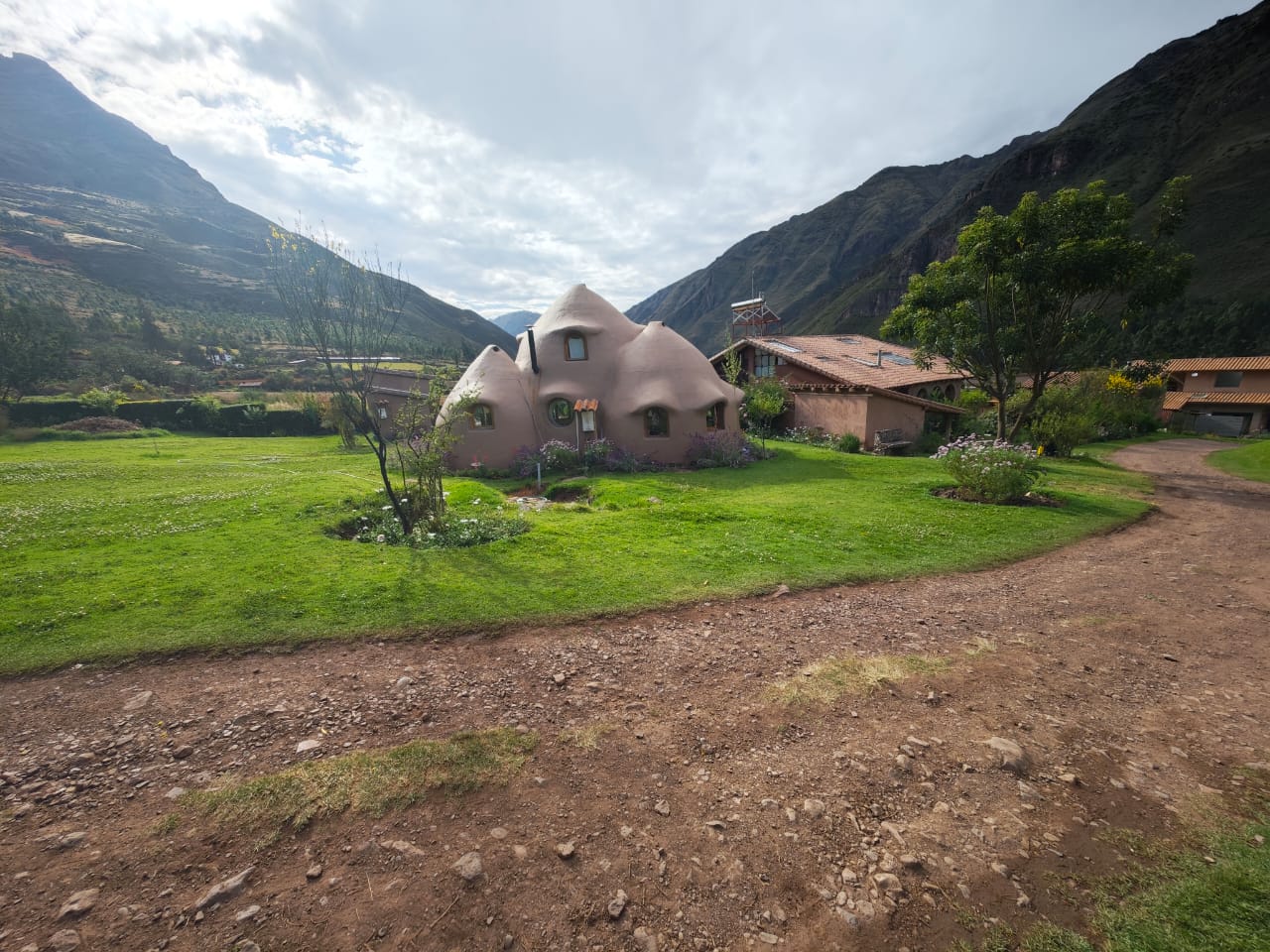
Photograph 6: Using ecological construction principles and local materials, new forms of housing are being built on the outskirts of towns on land originally intended for agriculture.
In addition to this alteration of settlement patterns and building morphologies, the proliferation of mural graphics, non-local mystical icons, and hybrid decorations generates a new epidermis for the traditional town’s urban landscape that is perhaps disconnected from traditional imagination. Pisac thus becomes a laboratory where cosmological perspectives intersect and materialise on the canvases of the walls. It is not just a matter of coexistence but of silent disputes over new territorial meanings. 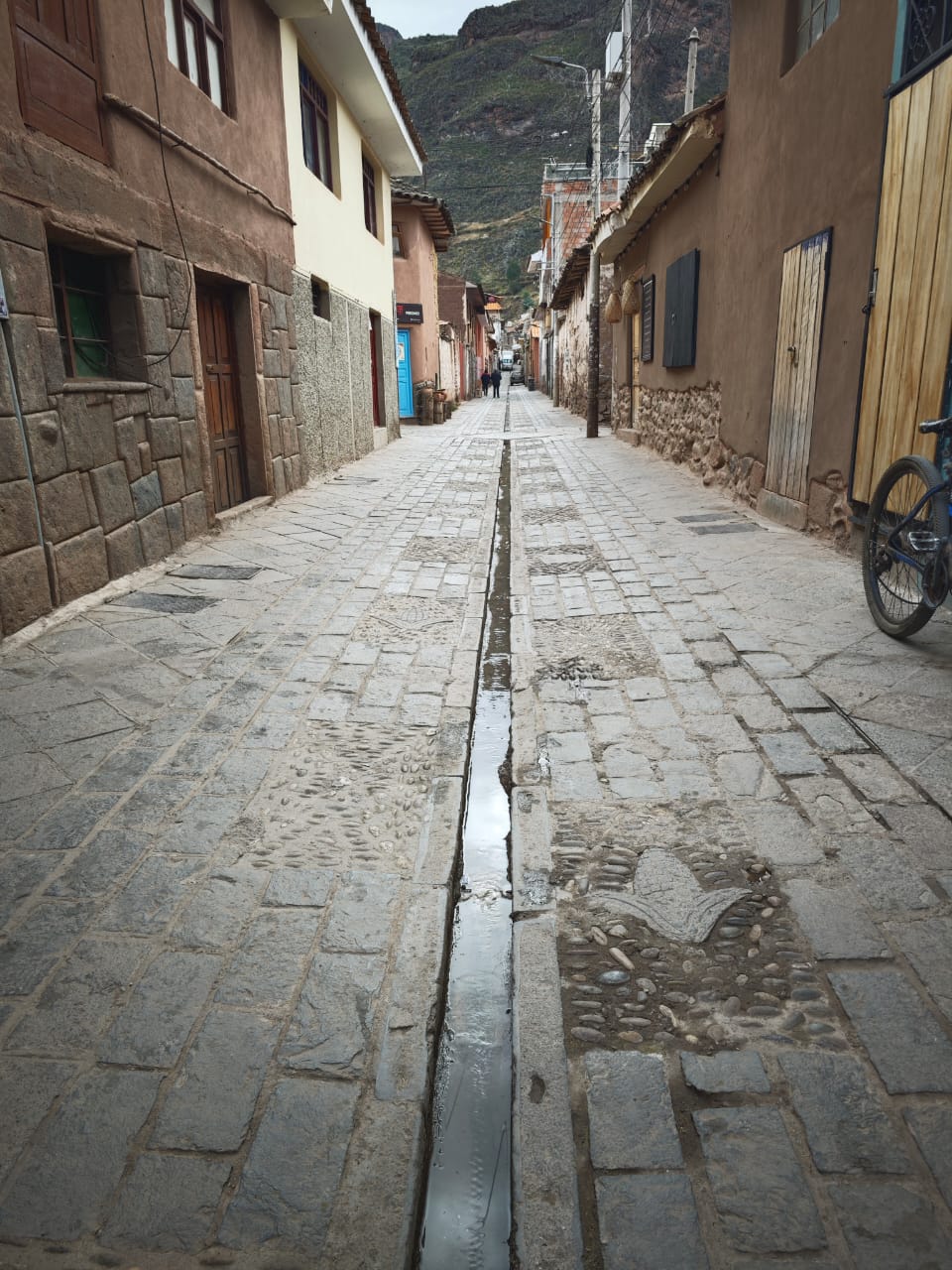
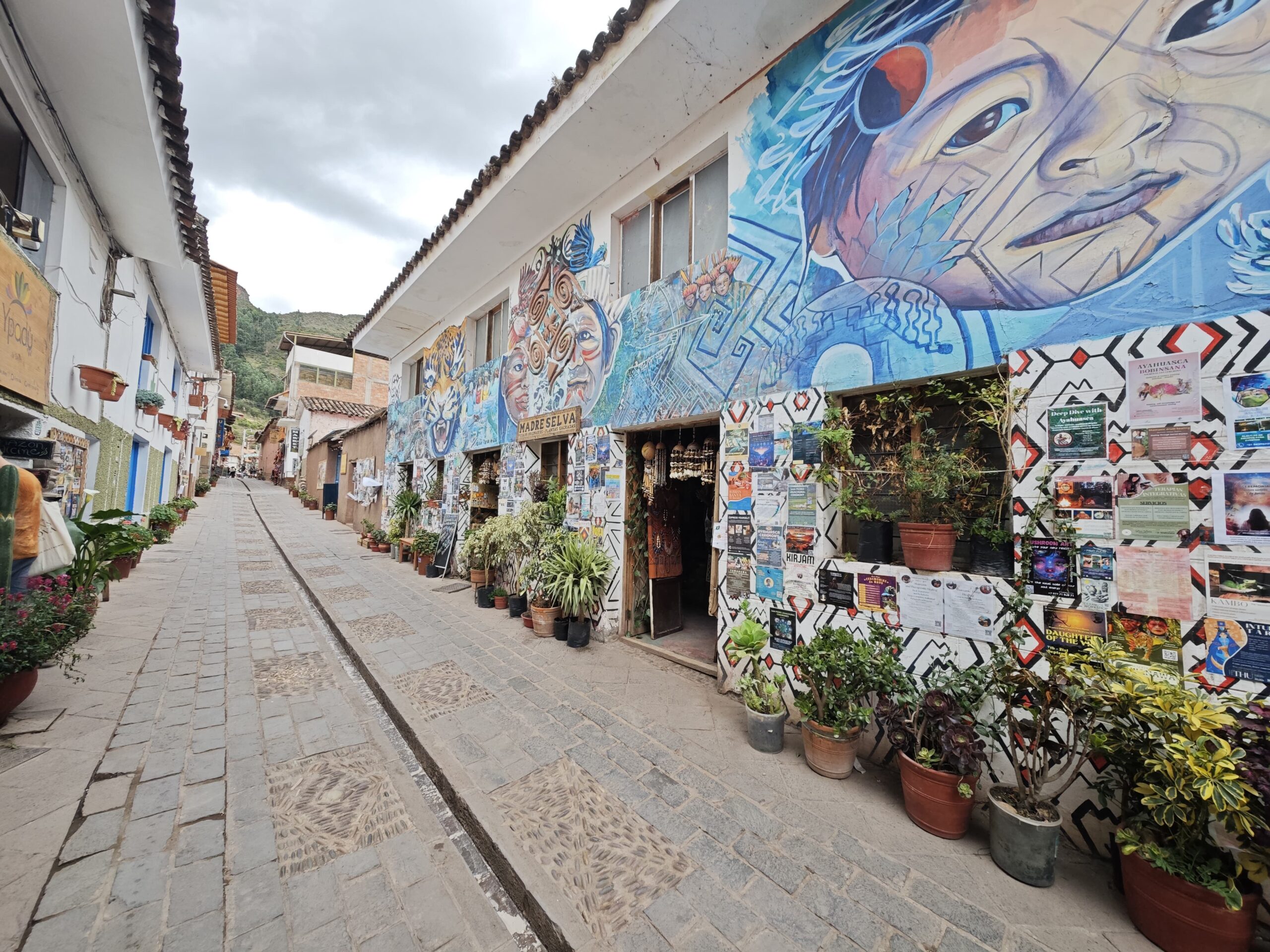 Photograph 7: Comparative view of the streets of Pisac, showing the original state and the ongoing transformation brought by the explosion of posters and graffiti offering spiritual experiences.
Photograph 7: Comparative view of the streets of Pisac, showing the original state and the ongoing transformation brought by the explosion of posters and graffiti offering spiritual experiences.
Ancestral knowledge and the limits of global inclusion
Inspired by the Sustainable Development Goals that encourage the existence of more just and inclusive spaces (2023 UIA Guidebook for the 2030 Agenda, n.d.), it is worth considering ways in which inclusivity does not mean applying global standards that ignore local knowledge, a knowledge that has been able to create balance and harmony between people, the territory, and its architecture.
Indigenous communities have profound knowledge about sustainability, which is expressed in construction techniques adapted to the environment, the distribution of domestic and communal spaces, and the relationship between nature and the built environment. The risk of this knowledge being replaced by new models of spiritual tourism or ecological architecture without a cultural anchor is a real threat to epistemic diversity.
Community ties may weaken or lose their meaning when a community’s symbolic dimension becomes a dramatisation and simulation for sale to tourists interested in new forms of spirituality.
In this context, architecture cannot continue to operate as a neutral discipline. It must recognise that in places with a significant historical legacy , there still exist living structures and dynamics related to urbanism and current architecture. Therefore, any opening toward a space of global inclusion must consider respect for preexisting conditions as a prerequisite.
Conclusions
Spatial justice in the 21st century cannot be limited to defending individual freedoms of mobility. It must incorporate a dimension that recognises the territorial and architectural memory of the host territory, which must be respected. The case of the Sacred Valley of the Incas shows that contemporary spiritual journeys—even when guided by noble intentions—can generate new processes of symbolic colonisation, altering the delicate balance between architecture, landscape, and culture.
In response to this, architecture must become a critical practice informed by local knowledge. It must take on a design ethic that articulates multiple rights: the right to arrive, yes, but also the right to remain; the right to transform but also the right to protect. Architectural practices should not take advantage of the economic needs of local residents to apply extractive practices but should instead become a sensitive mediator between worlds that coexist but do not always enter into dialogue.
Intervening in territories with difficult pasts requires more than just respecting heritage standards: it requires tuning in to the rhythms, languages, and affections that sustain communal life. Inclusive architecture in the 21st century must learn to listen, to translate without betraying, and to imagine forms of coexistence that do not simplify difference but embrace it.
Gonzalo Ríos is an Architect and Professor of Architecture at Universidad Católica de Santa María (Arequipa, Perú)
Keywords: Symbolic appropiation of space, displacement of indigenous communities, territorial rights in the Andes, contemporary spiritual mobilities and Sacred Valley of the Incas.
References
2023 UIA Guidebook for the 2030 Agenda. (n.d.). International Union of Architects. Accessed July 19th, 2025, https://www.uia-architectes.org/en/resource/2023-uia-guidebook-for the-2030-agenda/
Gómez-Barris, M. (2012). Andean Translations: New Age Tourism and Cultural Exchange in the Sacred Valley, Peru. Latin American Perspectives, 39(6), 68-78.
https://doi.org/10.1177/0094582X12454561
Jordan, K. (2022). Between the Sacred and Secular: Faith, Space, and Place in the Twenty-First Century. Architecture and Culture, 10(4), 571-597.
https://doi.org/10.1080/20507828.2023.2211823
Murra, J. V. (2002). El mundo andino: Población, medio ambiente y economía. Pontificia Universidad Católica del Perú. Fondo Editorial.
https://repositorio.pucp.edu.pe/index/handle/123456789/181611
Ríos-Vizcarra, G., Calatayud-Rosado, L. E., & Duche-Pérez, A. B. (2025). Symbolisation and domesticity in the Andean home: A phenomenological approach to dwelling in
Coporaque, Peru. Frontiers of Architectural Research, 14(1), 94-113.
https://doi.org/10.1016/j.foar.2024.07.005
Ríos-Vizcarra, G., Calatayud-Rosado, L. E., Duche-Pérez, A. B., & Cano-Ciborro, V. (2023). The emotional structuring of the Andean territory: Mapping embodied narratives in Coporaque, Peru. Frontiers of Architectural Research, 12(5), 985-998. https://doi.org/10.1016/j.foar.2023.06.003